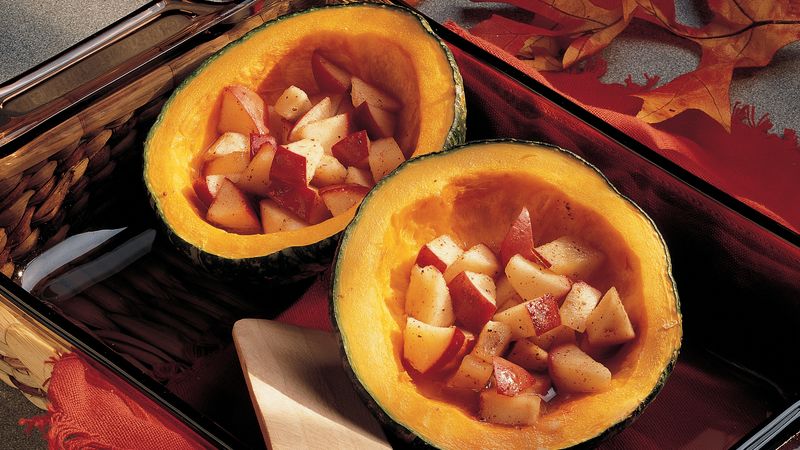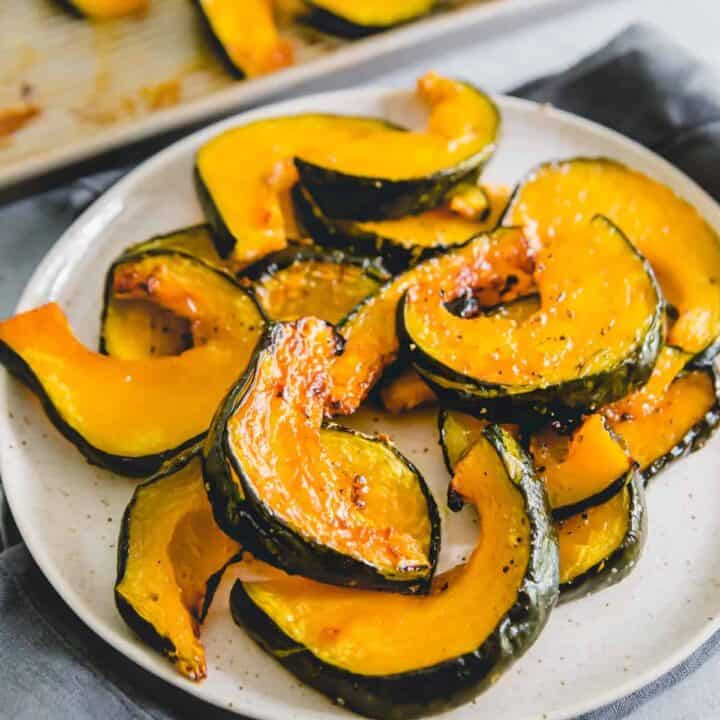
Roasted Buttercup Squash

Learn the best ways to cook buttercup squash including this simple method for oven roasting it with maple syrup until sweet and caramelized.
Prep: 5min
Total: 45min
Serving Size: 1
Nutrition Facts: calories 96 calories, Carbohydrate 8 grams carbohydrates, Cholesterol 0 milligrams cholesterol, Fat 7 grams fat, Fiber 1 grams fiber, Protein 0 grams protein, Saturated Fat 1 grams saturated fat, servingSize 1, Sodium 76 milligrams sodium, Sugar 7 grams sugar, Trans Fat 0 grams trans fat, unSaturated Fat 6 grams unsaturated fat
Ingredients:
- 1 large buttercup squash
- 2 tablespoons extra virgin olive oil
- 2 tablespoons maple syrup
- salt and pepper to taste
Instruction:
- Preheat oven to 425°F.
- Slice off small portions of top and bottom of the squash so that it sits flat on a cutting board. Cut the squash in half and scoop out the seeds (save them to roast). Cut each half into slices about 1/3″ thick and place in a single layer on a large baking sheet.
- Drizzle the prepared squash with half the olive oil, half the maple syrup, salt and pepper.
- Roast for 20 minutes.
- Remove the baking sheet from the oven, gently flip each piece of squash and drizzle the other side with the remaining olive oil, maple syrup, salt and pepper.
- Return to the oven and roast for an additional 20 minutes until squash is crispy and golden brown on the edges while the flesh is tender and starting to caramelize.
Buttercup Squash Prep
FAQ
What is the difference between buttercup and butternut squash?
What does a buttercup squash taste like?
Does buttercup squash need to be peeled?
Can you eat the skin of a buttercup squash?
